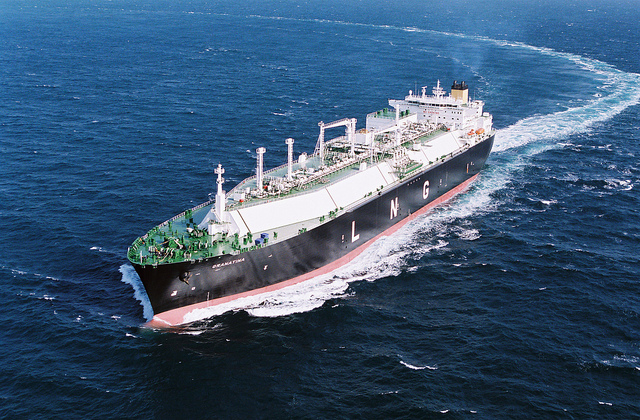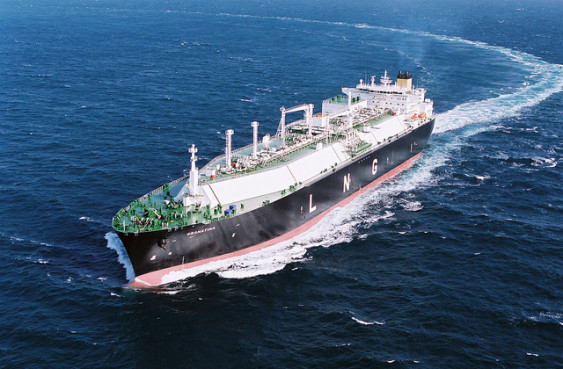An oversized carbon-fuel project may be coming to a small town on the Oregon Coast. A Canadian energy company wants to build a liquid natural gas (LNG) export terminal in Coos Bay, Oregon, to ship tremendous volumes of natural gas overseas. To serve the terminal with natural gas, a pipeline company would build hundreds of miles of pipeline through 72 miles of public forests, 400 water bodies, 700 parcels of private land, and the habitats of 32 endangered species.
The Northwest is becoming a prized location for LNG export development owing to the savings on shipping to Asia compared to other parts of the US. Northwest communities are wondering whether most of the benefits of natural gas will go overseas while the detriments will impact the Pacific Northwest’s environment.
In this article, we take a look at the scope, finances, and political landscape of the Jordan Cove Energy project as an example of LNG development in the Pacific Northwest.
What is the project?
- Scope: The Jordan Cove Export Project is a large natural gas shipping hub. It would receive natural gas by pipeline, cool it into a liquid state, and then move it onto large oceangoing vessels for export. The facility would be capable of shipping out 6 million tons per year of liquefied natural gas. (Traditionally, most LNG plants produced less than 2.5 million tons per year, but the advent of fracking has enabled project backers to build much larger facilities today.) Originally proposed as an import facility with lower energy demands, the current project proposal would need a new, 420-megawatt power plant for operations.
- Location: The export facility would sit on the shores of Coos Bay on the southern Oregon coast. A 36-inch diameter pipeline delivering natural gas to the project would run across 232 miles of public and private land from a pipeline hub in south-central Oregon.
- Project backers: The project’s Canadian parent company, Veresen, is a diversified energy infrastructure company that owns and operates LNG pipelines and processing plants, as well as electrical power-generating stations. Veresen is not sufficiently capitalized to construct the pipeline and terminal, and the company’s CEO has acknowledged that the project is “a high risk game.” In fact, Veresen is caught up in a legal dispute with a financial advisory group over the project – Veresen recently lost in Ontario Superior Court – and has yet to secure a single buyer for its largely untested investment structure. Veresen’s partner on the pipeline, Williams Partners Operating LLC, has a bad enough safety record to have triggered a federal investigation.
How will the project be approved or denied?
“The facility would be capable of shipping out 6 million tons per year of liquefied natural gas.”
- Community hazard review: The Federal Energy Regulatory Commission, one of the main regulatory agencies for LNG projects, issued a draft environmental impact statement in November of 2014. During the public comment period, scientists with experience researching the fire and explosion risks of LNG challenged the hazard model that formed the basis for the Commission’s conclusion that the facility would pose a minimal hazard to the surrounding community. Others noted that the facility would be built in a tsunami hazard area. Although regulators have not yet published their final review, the Commission has a history of approving LNG facilities.
- Environmental review: In addition to federal oversight, various state agencies play roles in permitting both the pipeline and the export facility. The Oregon Department of Environmental Quality has authority to enforce compliance with the Clean Water Act.
Perhaps the most critical review comes from the Oregon Department of Land Conservation and Development, the agency that determines whether the project passes muster with the state’s Coastal Zone Management Plan. Opponents contend that state should deny the project’s permits because its location violates the Plan’s provisions to prevent or reduce threats to life and property posed by development in “high-hazard areas.” Although the state’s review process has been underway since 2009, it is not yet completed and officials have repeatedly delayed making a determination, citing insufficient information.
The Jordan Cove Export Project would be the state’s largest single source of climate-changing carbon pollution, a fact that concerns many environmental advocates. In a legal case without precedent, 21 young people filed a lawsuit against the US government regarding its regulatory policy on LNG exports, including the Jordan Cove project. This lawsuit, known as the “Our Children’s Trust” lawsuit, asserts that in causing climate change, the federal government has violated the youngest generation’s constitutional rights to life, liberty, and property, and it has failed to protect essential public trust resources through its policies of promoting fossil fuels. The claimants filed the lawsuit last month in US District Court for the District of Oregon, challenging the terminal; a court date has not yet been set.
- Land use review: Local government plays a role, too. In 2007, the Coos County Planning Commission unanimously approved siting for an import facility. Oregon Shores Conservation Coalition and Coos Bay resident Jody McCaffree have appealed administrative actions the County has taken since the project was converted to an export facility. The case is now headed to Oregon’s Supreme Court; a hearing date has not yet been set.
What is the political landscape?
- Property owner concerns: More than 700 private landowners in four counties own property either directly on or adjacent to the pipeline route and many of them do not want the pipeline to cross their land. To allow for pipeline construction, the government may use its power of eminent domain to seize portions of their property, a move that raises serious concerns from the property owners who fear the use of eminent domain will prevent them from using their land for its intended purposes in exchange for a small, one-time payment.
“The Jordan Cove Project would be #OR’s largest single source of climate-changing carbon pollution.”
- Citizen opposition: An opposition rally in Salem on May 26, 2015, drew approximately 700 protesters who called for Governor Kate Brown to hold state agencies accountable for all state and local laws and to use tsunami hazard zone restrictions contained in the Coastal Zone Management Plan to reject the project’s permit application. At least fifteen organizations across Oregon collaborated on the rally, including a coalition of southern Oregon activist organizations, No LNG Exports.
- Lawmaker skepticism: Democratic Senator Ron Wyden initially voiced support for the facility but is now asking questions about potential siting hazards, and Congressman Peter DeFazio (OR-4), agreeing with concerns from landowners along the pipeline route, opposes the facility.
- Tribal opposition: The Klamath Tribes have taken a stand in opposition to the pipeline; in June of 2015, tribal members and allies rode horses from Chiloquin to Salem to speak out for their water rights and against the pipeline.
The Federal Energy Regulatory Commission is set to issue a final environmental impact statement on the project on Sept. 30, 2015. The environmental impact statement is only one of the factors in approving a project, but it can be a good indicator of what the outcome will be. After a final impact statement is issued, a minimum thirty-day waiting period ensues before officials notify the public about the project’s approval or denial.
The Williams Company, clearly expecting a positive outcome from the Commission, has already started marking trees to be cut down for the pipeline even though it hasn’t been approved. Meanwhile, the No LNG Exports coalition is coordinating “Hike the Pipe,” an event in which opponents are walking the length of the proposed pipeline. “Hike the Pipe” will culminate in a rally in Coos Bay on September 26.













Wim de Vriend
From the Financial Post article: “For all of Althoff’s confidence, the project does not boast a single buyer, an issue Veresen hopes to fix by the second quarter.”
Hope, Francis Bacon said, is a fine breakfast but a bad supper. We’re almost in the fourth quarter, and still no contracts. In fact, since the spring of 2014 nobody has signed any contacts with aspiring new US LNG terminals. That’s because those under construction or coming on line (in the US and elsewhere) will soon add between 150 and 200 mmtpa of new liquefaction capacity — when the present world market for LNG is no more than 250 mtpa.
In other words, the market will soon be glutted, prices in east Asia have already tanked, and buyers are shying away from contracts when they can buy spot cargoes for less than contract prices, a new but welcome development for buyers if not for sellers.
Unless a miracle happens, Jordan Cove will not materialize, and neither will many hundreds of mtpa capacity proposed for Canada.
Philip S. Wenz
Thanks for this thorough report with all its links. Unfortunately, this is another example of mega corporations using the federal regulatory agencies to secure “rights” for themselves, even though communities and, apparently, the majority of people, don’t want what they are selling. (Think Monsanto’s lobbying for federal regulations prohibiting local and even state control of GMOs).
Tim Palmer
You should check with Representative Peter DeFazio’s office to see what his current position is.